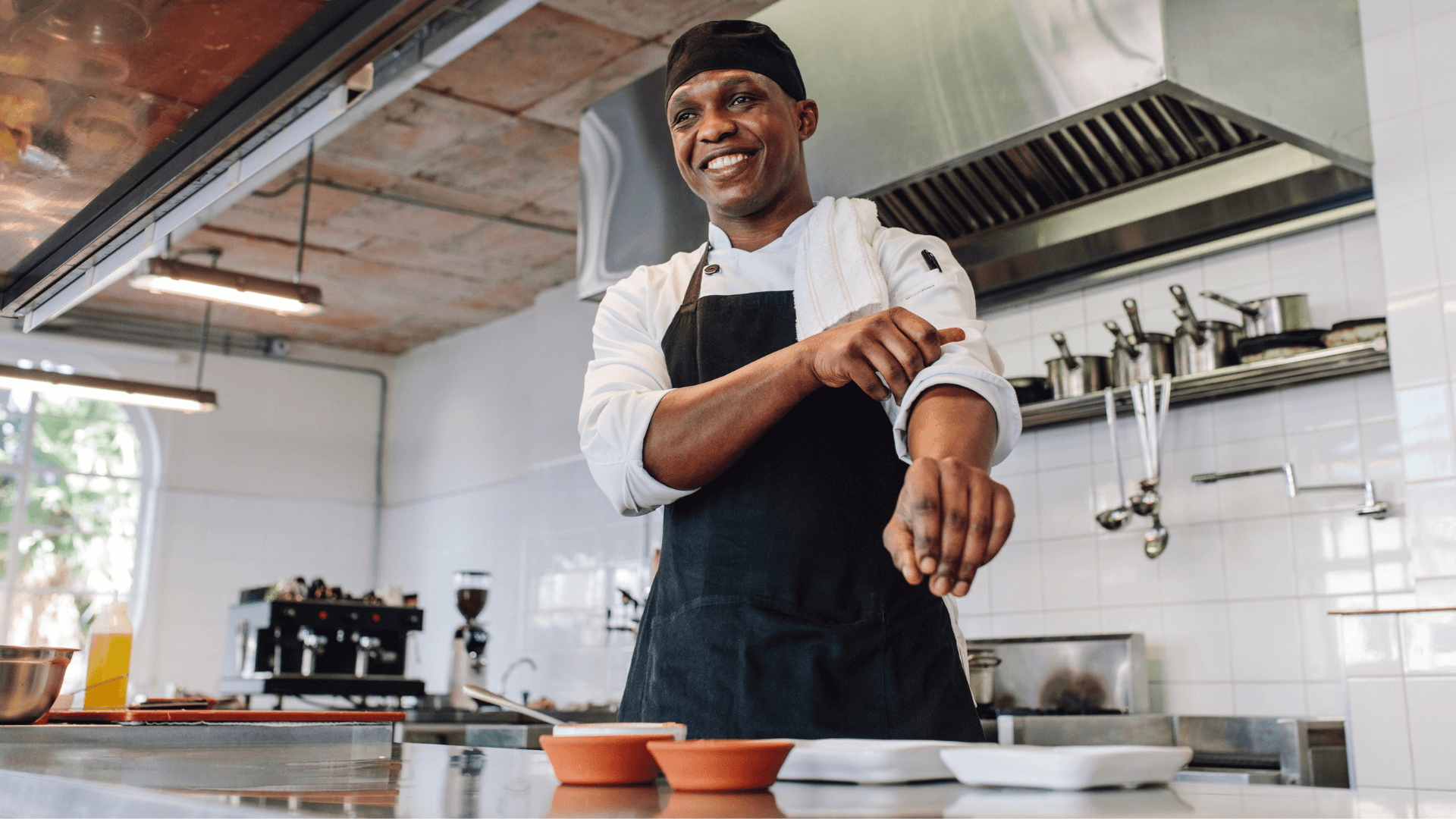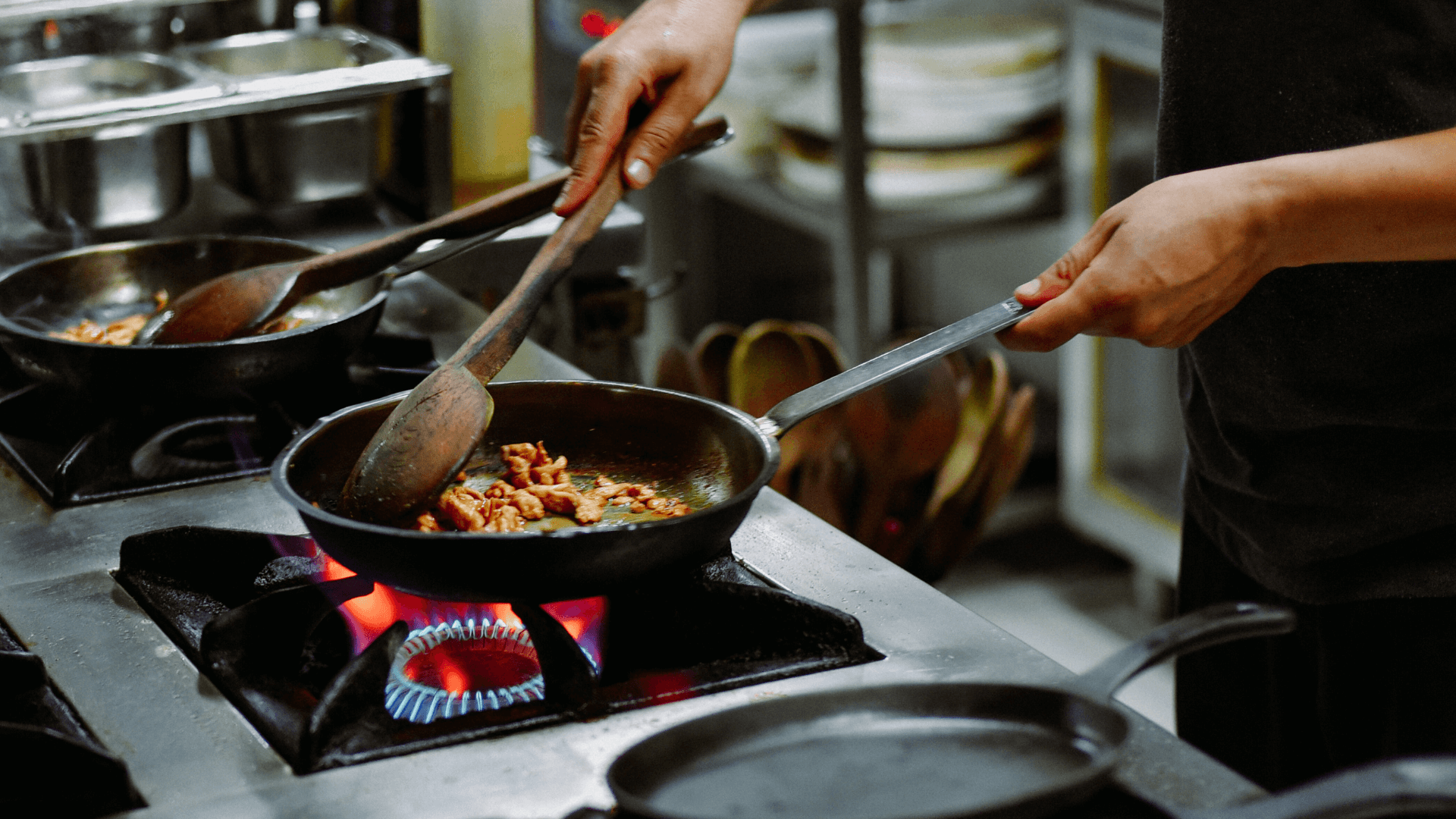As a chef, I’m frequently asked by non-chefs what makes restaurant food taste different, and how to achieve those same results at home.
I think part of the enjoyment of a restaurant meal is simply the show, the service, and the fact that you didn’t cook it yourself. But there are a few fundamental things that restaurant chefs do that most folks at home aren’t doing.

7 tips to cook like a chef at home. Image: Canva
1. Prep ahead
I really can’t stress enough how important this is. Chefs design their workload so that as much as physically possible is done long before service. Anyone who has watched a fair amount of cooking shows will know about “mise”, short for “mise-en-place”; the preparation that chefs “put-in-place” to make their lives better later.
This, I believe, is the downfall of most ambitious home-cooked meals. So often I’ve been to a dinner party where the host is running around last-minute preparing something that could (and should) have been prepped hours, or even the day before.
Break down recipes or dishes into smaller parts. Think about how long each task will take and which can be done early without spoiling. Think slow-cooked meats, salad dressings premade in jars, veggies washed, trimmed and lined up on a tray ready to go into a pan. This prevents forgetting to add essential ingredients (such as the baking powder in your cake) and keeps the chaos at bay. Which brings me to the second fundamental difference.
2. Clean as you go
This is perhaps an obvious one, but essential nonetheless. Anthony Bourdain famously wrote about one of his mentors pointing at a chef’s dirty workstation and saying: “That’s what the inside of your head looks like.” I’ve found this to be very true.
The messier your kitchen becomes, the harder it is to think clearly and cook well.
It really does affect the end product. Constantly remind yourself to keep your work area clean and wash dishes as you go. Before you even start cooking, tidy the fridge and make sure your kitchen drawers are organised, so that you can grab any item you need without having to think.
3. Taste everything, at every stage
By the time I finish cooking a meal, I’m often so sick of tasting it that I no longer feel like eating it. While I’m not suggesting spoiling your meal, it’s vital to keep track of what your dish tastes like at every stage.
During this tasting, you should also be thinking.
Constantly assess whether you like the flavour and, if you don’t, don’t panic! Think about whether you’ve covered all the flavour bases (sweet, sour, bitter, etc.). Think about texture and consistency. And, most importantly and deserving of its own category, think salt.
4. Salt
I feel like it’s a bit of an old wives’ tale that the secret to good food is butter. Yes, fat is a flavour carrier, but in my experience, it’s really seasoning that makes all the difference. Use good quality salt (my preference is Oryx desert salt) from a pinch pot.
One of the first things I was taught at chef school is that you need to feel the amount of salt you’re adding.
A grinder is very difficult to regulate. Many people seem scared to over-salt, but this is often a tasting issue. Add pinches of salt slowly and taste after every addition until you’re satisfied. And remember that everything could do with a little (or a lot): pasta water, veggies after steaming, rice, desserts, bread, really everything.
5. Diversify your seasoning
Seasoning goes beyond salt. Include sugar and acid in this category too. I would also like to strongly recommend a controversial addition to your pantry: MSG.
The longstanding belief that MSG is bad for you is one of the most unfortunate examples of misinformation in the food industry.
MSG is an absolute gem in the kitchen. A pinch in rice or honestly pretty much anything does wonders to enhance flavour. I’ll have a brief rant here about pepper use. Pepper, while delicious, is not a seasoning. I find it bizarre that most restaurants (and homes) offer it as such. It is a flavour in its own right that should be used in specific dishes only. I advise using it sparingly, otherwise everything tends to taste the same.
6. Use more heat
I barely use my oven. The stove top (especially a gas stove) is just so much more efficient and usually leads to better flavour. The Maillard Reaction is the process whereby amino acids and sugars are converted during cooking at high heat, resulting in browning and delicious flavour.
Think of the crust on a well-cooked piece of steak, or a golden-brown loaf of bread. This crucial colour is way easier to achieve on the stove stop, at least, in part, because it’s easier to monitor than food in the oven.
I have lids for all my frying pans – and use them frequently. A good searing, followed by creating a mini oven in the pan simply by putting the lid on, has excellent results for fish, chicken and veggies. A smoking hot cast iron griddle pan is also an indispensable tool for creating flavour at home.
7. Eat more, and differently
My chef friends and I eat out more than anyone else I know. For me, this is partly simple enjoyment, but at least some of it is professional curiosity and research.
Thinking about how a chef might have achieved a specific effect in an incredible dish has been a huge part of my cooking education.
It’s also a great source for new ideas. Trying new flavours at home can be equally educational, even if it is just buying a new ingredient that you’ve never eaten before and playing around with it.
Need dining inspiration?
Download the Dineplan App and find restaurants based on cuisine, location and availability!
Most good cooking is just about practice. This brings confidence in your ability to taste and create flavour. If I can recommend one resource for helping achieve this, and all the tips above, it’s the book Salt, Fat, Acid, Heat by Samin Nosrat. This is a really excellent tool for any cooking enthusiast and is guaranteed to change the way you cook at home for the better.



0 Comments